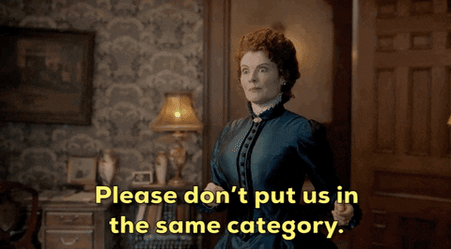Time to get meshy! How successful CSMs drive massive impact.
Don’t we all aspire to be champions in our everyday lives?
Well of course!
We all want to come out on top... whether that’s in a softball game or meeting a quota of some sort.
Ultimately though, champions are typically thought of as individuals. But I don’t think the pressure of being a champion has to rest exclusively on one person's shoulders.
Within the SaaS space, we know the value of our internal customer champions.
Or do we?
.gif?width=444&height=250&name=giphy%20(29).gif)
Let’s get away from “this is how it’s always been done”.
It’s been time.
So who is the “customer champion” anyways?
According to Customer Success Box, the customer champion can be thought of like this-
“They are ones who understands the true potential of your product, ensures the company allocates resources and appropriate actions are developed and deployed”
These internal champions have a deep understanding of the product and are able to advocate for its use within their team and to their broader company.
And then customer champions can also be thought of as external as well. Like, say, a customer success manager helping an account better use the product.
But, I actually don’t think internal champions are a key to success.

Yes, they have had value. But now, with all we have access to, we’re ready for something bigger.
A mesh, if you will, of different power users across teams.
Not just one “champion,” but multiple advocates using your product in ways that suit them best.
Losing a Customer Champion: An All Too Easy Way to Churn
Many people have felt this pain. It’s a little too common in today’s choppy economic waters.
And it’s not fun.
Everything is promising and awesome and you’re looking forward to this long relationship.
Your champion can be totally happy with your product and its features.

But, anything can happen.
Their budget could be slashed.
Their boss could cut you because they themselves couldn’t see the value.
They might quit and didn’t let anyone else learn how to use the product alongside them.
Or, they could get laid off or fired. And then what you had going with them is quickly burned.
And you’re left wondering how maybe this could have gone better.
Relying entirely on this one internal champion to advocate for your product across their team is a lot.

In an ideal world, yes, they would be using your product constantly, learning about it, asking questions, and also showing their team how they can use it, or at the very least telling them to ask them for more info on it.
They have tons of other stuff going on besides ensuring your product is getting the love it deserves.
So how can you ensure your relationship with this customer and this account is churn proof?
Build a Mesh to ensure deep product adoption
Ever considered ensuring that you can have more than one internal champion?
This approach removes the burden from just one person (e.g. “the champion”). But it also ensures that you have two (or more) advocates for your product.
Like I said, situations can change on the fly.
So, making the push to have more than one champion can give you a leg up.
Everyone thinks differently.
Having two people who approach problems differently, both learning to use your product in a workflow that works for them can be extremely valuable.

Let’s say, for example, your product is available to multiple teams.
And the original champion—who was integral to the prospecting process—is on the customer success team for their company.
Could you make the request that they include someone from the account management team to join some of your onboarding calls?
Once your first user is comfortable with the product, could you ask them how they think the product could be used in other settings/teams?
There are multiple ways to get another advocate on board. It just depends on how your relationship is progressing with the first one.
Having multiple perspectives on your product from one account gives you a stronger customer relationship.

It also allows you to better understand how customers are interacting and using your products.
When you do this, you essentially create your own little network within the company.
Building an internal network of users with multiple advocates
So, yeah, a mesh is great for product adoption.
It’s also great for strengthening your brands reputation.
As you grow and nurture these relationships, you have more people who can use your product well. And this creates more opportunity for more advocates.
Remember, your customer's word on trusting you is your greatest asset.
It’s easy to see how having a team of advocates can be a game changer for retention.

Here’s another example of how an additional power user can be a good thing:
Maybe the person who should be your “internal champion” isn’t grasping the product well.
You can see they aren’t using the product to its full capability.
Can you request someone from another team join the meetings, and frame it as an opportunity for their team to better learn the product?
Maybe they’re unresponsive and are missing check-in meetings.
Can you make a request that someone stands in for them in meetings?
Maybe they’re overwhelmed and just feel like they have a hundred other tasks that stand in between them and attending?

Like we’ve said before, customizing a solution to each customer is integral to retention.
And that might mean asking for help from other teams.
It might mean fewer QBRs but more chat conversations between you and your champions.
So finding that sweet spot of different players who all feel supported is key. And more supported users equals a better, stronger brand.
Unified data is the key to building a mesh
So I’ve given a few, smaller ideas on how to build a larger network into your relationship with an account.
But honestly, I think there’s an even better way than those.
A unified presentation of data available to teams can be a game-changer.

Ensuring that multiple teams can utilize data and understand it in the same way is important to the longer lifecycle of a customer.
Because, as we’ve discussed at length, data siloes can kill businesses.
Without a central view of data, everyone has a different opinion on what they should be working towards.
And often leads to disagreements and wasted time and resources.
But when everyone can look at the same data (and understand it the same way) we can get somewhere.
We can get actionable, quantifiable insights that teams can work towards.
This is true even if it means something different for the customer success team versus the product team.
It still creates a better understanding of the data already being collected. And it strengthens everyone’s work.
And like I said, this unified data across teams makes it much easier for multiple users to see the value in a product.
So- how is an amazing customer experience achieved?
This leaves us with our next steps to drive better, evidence-based retention.
1) multiple people who understand and use your product better, and 2) a common view of data to explain “the why”.
I think Tingono can be a helper for you to achieve these two things.

Tingono’s predictive analytics often show that a champion leaving an account puts that account at risk.
By building your mesh, you’ll reduce this risk and proactively protect your account.
And our 360-degree view of data provides a common view of data.
So by bringing Tingono into your workflow, (it’s easy- we promise) you can bring better insights about your customers to various arms of your GTM team.
So whether you jump in with us at Tingono or go a different route, I hope you find some value in bringing a “mesh” into your strategy :)
I really think this is the next phase of SaaS customer success. Let’s get on board!






